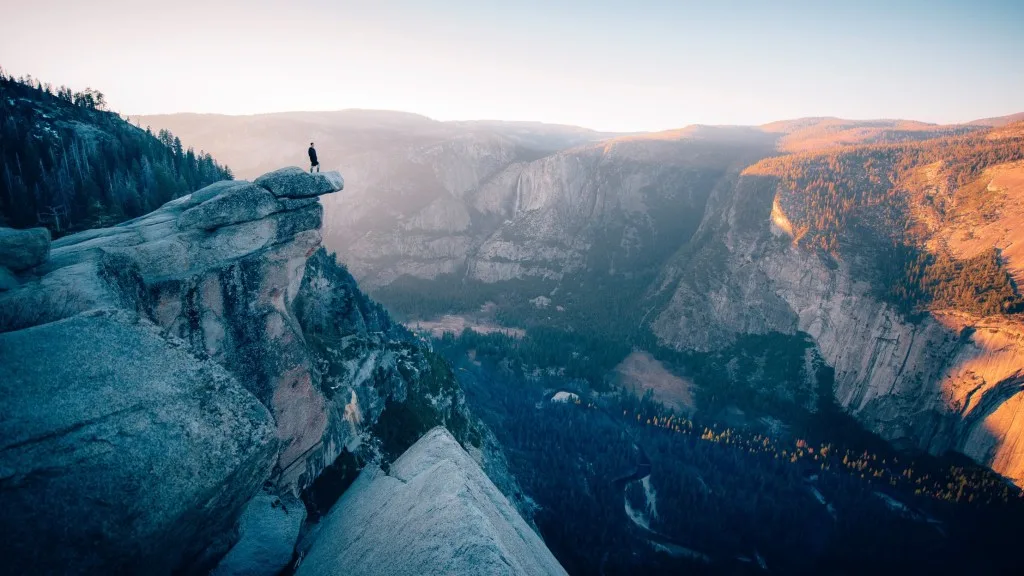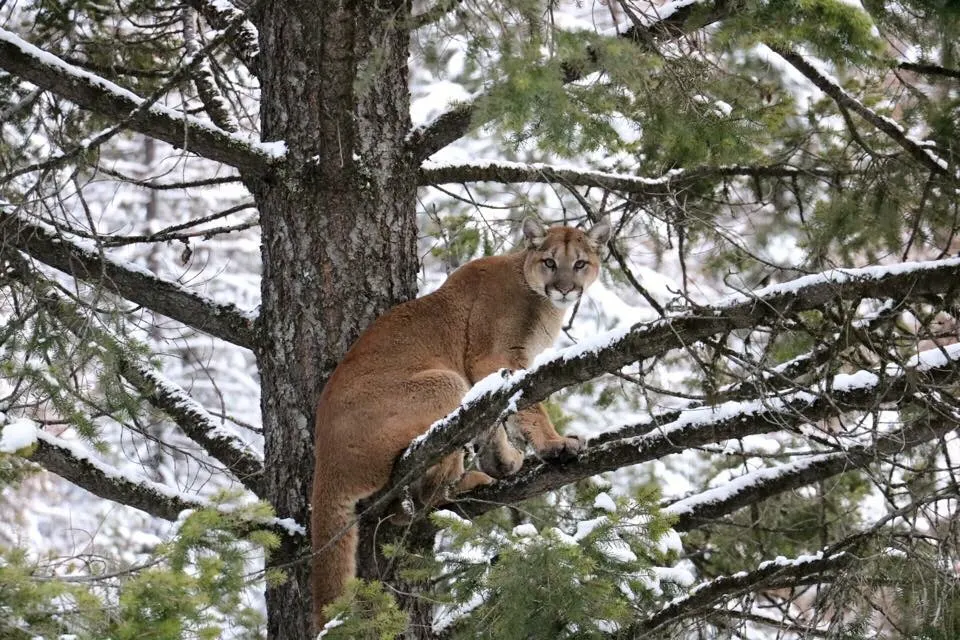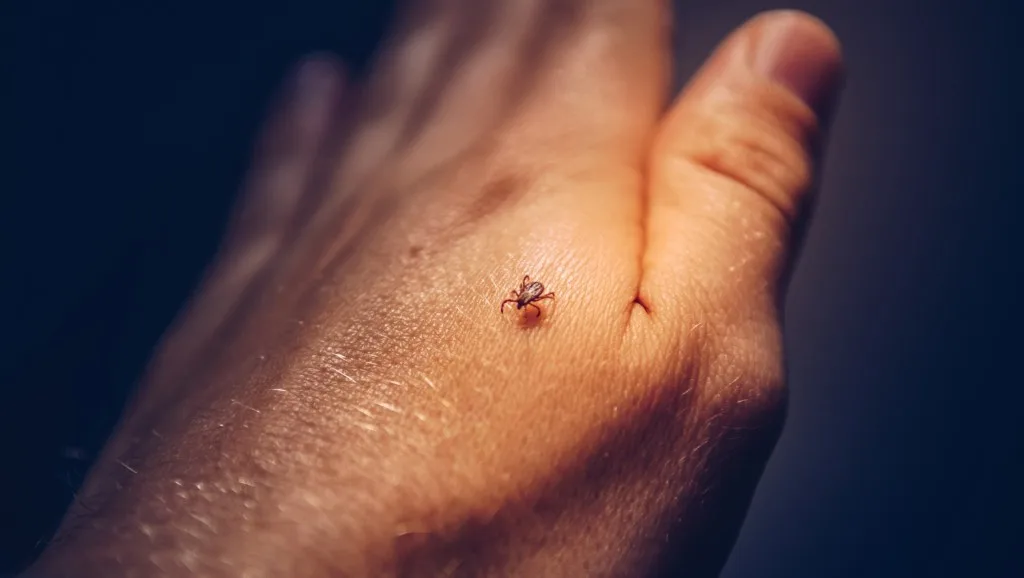Glacier National Park absolutely has some dangerous creatures. Which animals do you consider when camping or hiking, and how serious are the risks?
We love the outdoors and feel knowledge is power! So we wanted to check out the details on the park’s most dangerous creatures.
Let’s see what we discovered!
Glacier National Park
Glacier National Park is in northwestern Montana, just south of the Canadian border.
The Blackfeet tribe sold the land to the U.S. government who signed the park into existence in 1910. Due to abundant glaciers and astonishing terrain, the park has been called the “Crown of the Continent.”
Glacier National Park is incredibly popular within America’s hiking scene. With only 25 of 150 Glaciers remaining, many visit the park just to wrap their heads around that fact.
That said, there is more to Glacier National Park than the ice. The acres of valleys and granite peaks are home to hundreds of animal species. And although the majority are harmless, we wanted to hone in on the ones folks should be aware of before visiting.

The Most Dangerous Creatures in Glacier National Park
Most of the dangerous wildlife in the park are mammals. You know – the ones that would look amazing on your Instagram account? It’s so tempting to get close, but please don’t! Do yourself a favor and invest in good lenses for your camera and phone.
The number one safety rule when coming across wildlife in the park is to keep your distance.
You should stay at least 300 feet (91.4 meters) away from wolves, mountain lions, and bears. That’s the length of a football field.
Give yourself at least 75 feet (23 meters) distance from all other mammals, especially Moose, elk, bighorn sheep, mountain goats, and coyotes. Two and a half city buses or the height of a 5-story building equal about 75 feet.
Let’s get into some specifics now, shall we?
Grey Wolves and Coyotes
Wolves have long been feared and hunted by humans. By 1936 all of the wolves were tracked and killed in Glacier. Luckily, in 1980, a Canadian wolf conservation organization brought a litter of pups to the park. Now, grey wolves are doing great in Glacier. They tend to stick to one area and will probably stay away from you.
That said, grey wolves can be confrontational if you accidentally go near their pups. If you see a wolf, stay calm and don’t run. Keep eye contact and slowly back away.
The smaller, less shy canine, the coyote, is abundant in the park. Because they’re highly adaptive, they’re more familiar with humans and less likely to run away. This makes them a more dangerous animal than the wolves.
If you see a coyote that doesn’t move along, you should stand your ground and haze them. No, not in the fraternity brother kind of way!
According to humansociety.org, hazing involves things like standing tall, and yelling “Go away coyote!” You can throw rocks or sticks, stomp your feet, and wave your arms. Use your whistle or any kind of noisemaker too.

Wolverines
The oddly adorable wolverines are about the size of a medium dog. Although they’re members of the weasel family, they look more like little bears with big feet. Glacier National Park is home to an abundance of these hyperactive omnivores.
Wolverines love food and are scavengers. In fact, people tell stories about them fighting bears and wolves for their kill. If they can’t finish all of their food in time, they spray it like a skunk and bury it for future dining.
Keep your food and garbage out of sight and smell. The cleaner your site, the better. Your chances of running into wolverines are slim, but your pet companions will thank you!
Mountain Lions
Our next predator brings our warning signals up from code yellow to code orange. Maybe even a code red. mountain lions are majestic, mesmerizing, and beautiful. They’re also fierce predators and very dangerous animals.
Mountain lions are nocturnal and can kill animals twice their size. Although attacks on humans are rare, these cats remind us never to hike alone. In addition, keep your children and pets close at all times.
If you encounter a lion, stand tall and make eye contact. Use the same hazing tactics as mentioned with the coyote, but don’t approach. Do not crouch or bend over, and never show your back to a mountain lion. Your goal is to convince them that you’re dangerous and that they should stay away.

Tiniest Dangerous Creature – Hantavirus from Deer Mice
Although you may never see deer mice during your stay, you should take precautions with where you camp and what you touch when hiking.
Deer mice can carry a dangerous disease called Hantavirus. This virus is sinister and can lead to death if untreated. Initial symptoms are like the flu. From there, things can deteriorate rapidly. If you’re showing signs, it’s best to pack up and go to the hospital right away.
The good news is it’s pretty easy to take precautions. Hantavirus spreads from mouse urine and droppings. Don’t touch the poop! And don’t stay in areas that seem infested with rodents.
You can inhale the virus as aerosols or dust, which means spraying your camp area with a water and bleach solution can help. Keep in mind, though, that bleach can harm the environment. So only spray the solution with the permission of the ranger or campground manager.
Ticks
Another dangerous creature on our list is the mighty tick. These critters are so small that finding them is half the battle! Although ticks love spring and summer, they’re a danger year-round. Ticks carry several serious diseases, including Rocky Mountain spotted fever and Lyme disease.
Wear insect repellent, and spray your clothing and gear with permethrin. Carry a tweezer or a tick remover tool. Wear light-colored socks and tuck clothing in to cover your skin.
If it’s hot, and you’ve just gotta wear your favorite shorts, be prepared to spend extra time daily inspecting yourself for ticks. Fashion victims pay extra in tick territory!
Pro Tip: Ready to explore more national parks in the new year? We discovered 22 Must See National Parks in 2022.

The Most Dangerous Creature in Glacier National Park
By now, you may have a good guess as to which is the most dangerous creature in Glacier National Park. What if we told you we have a tie? Would you shun us at the local campfire?
The most dangerous creatures in Glacier National Park are grizzly bears and moose.
Bears
Both black bears and grizzly bears live in Glacier National Park. Grizzly bears, or brown bears, are the more ferocious of the two. They carry the reputation for being the most dangerous creature in Glacier for a good reason. Males can weigh up to 850 pounds. Although these bears will most likely leave any area with humans, they may attack in rare cases.
To be safe when hiking in bear territory, always hike in groups. Clap or make noises when turning any corners. Don’t run on trails, and be aware of your surroundings. You’ll also want to carry bear spray and keep a backup at camp. Lastly, it’s best to avoid any perfumes and keep your area clean.
If you encounter a bear, do not run. Do not make eye contact. Start talking in a quiet voice, and back up slowly if you can. If this aggravates the bear, stand still, hands by your chest, and continue to speak quietly.
In the highly rare case that the bear charges, collapse to the earth onto your belly and cover your head with your arms. This is a proven way to get the bear to move along.
Moose
Moose and elk are abundant in the park. While elk tend to travel in packs, moose can be seen wandering solo. And they’re huge! Moose stand at about seven feet at their shoulders and are unafraid of humans. Three times as many hikers get attacked by moose than bears each year.
If a moose has noticed you and seems agitated, do not throw anything at the moose. Back away with your palms facing the moose, and speak softly. If the moose charges, run! Get behind a big rock or tree. If the moose attacks, curl up into a ball until the moose leaves.
Education Helps with Glacier’s Dangerous Creatures
When traveling to any park, take time to read the local guidelines and learn about the creatures that live there. Glacier National Park is a must-see destination. We just have to remember to be respectful toward its many residents.
With a bit of homework and a checklist in hand, we know you’ll enjoy your time at Glacier. Grab a buddy and enjoy this hiker’s paradise.
Have you run into any dangerous creatures at a national park?
Discover the Best Free Camping Across the USA
To be honest with you, we hate paying for camping. There are so many free campsites in America (with complete privacy).
You should give it a try!
As a matter of fact, these free campsites are yours. Every time you pay federal taxes, you’re contributing to these lands.
Become a FREE CAMPING INSIDER and join the 100,000 campers who love to score the best site!
We’ll send you the 50 Best Free Campsites in the USA (one per state). Access the list by submitting your email below:
Bears. You failed to mention what kind of bear as Glacier has both Black Bears and Grizzlies. Your info on what to do was for Grizzlies. With Black Besrs you do the stand tall and make noise thing. Unless it’s a sow with cubs. Then you’re in trouble.
It can also pay to ask the park rangers for trouble spots to stay away from.
Way back in 1965 I was backpacking in Glacier. I had planned on an area on one side of the road, but changed to the area on the other side so hiking away from trouble instead of towards it. This was the time a foolish woman had brought her little dog on the backpacking. A Grizzlie had been following them all day showing interest in the dog. Did they wisely turn around and hike back out? Of course not. At the camp that night the Grizzlie was still there. Did they take turns to keep a fire going all night? Of course not. Instead she brought the dog into her sleeping bag to keep it safe. So the Grizzlie simply dragged the entire bag into the woods and killed them both.
Maybe this was the incident that made the Park Service ban dogs from the trails. Or maybe just another visitor ignoring the ban. As a ranger in Yosemite in ’90 and ’91 I had to make people turn around and hike back to their cars when I caught them with dogs. They were indignant that their precious pet was not allowed. One stupid woman said she was going to report me to a superior ranger. 😆 Apparently she felt she was special and didn’t have to obey the rules!